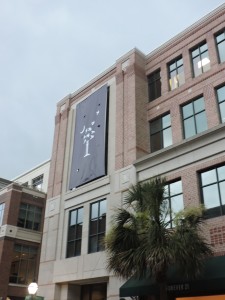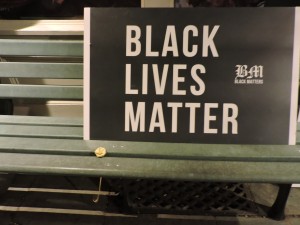Carrie Smith-Prei | Maria Stehle
@BetülUlusoy und @KübraGümüşay: Wie erklärt ihr euch die Vereinbarkeit von Eurer pro- Erdoğan- und pro-IGMG-Gesinnung (Erdoğannahe Organisation in Deutschland), die ihr seid Jahren in diversen Eurer Tweets und Postings offensichtlich (Ulusoy) und teilweise durch die Blume (Gümüşay) ausdrückt, mit eurer Aussage, dass ihr “Feministinnen” sein wollt und für Frauenrechte kämpft? […] Feminismus […] bedeutet […] nämlich: neben der Bestrebung nach der Beseitigung von geschlechtsspezifischen Ungleichheiten im eigenen Leben und Gesellschaft vor allem der kritische Hinweis auf patriarchal-frauenfeindliche Strukturen in der eigenen Community – ich kann solche Tendenzen bei keinem von Euch erkennen.
—(Lady Bitch Ray, excerpt of her Facebook posting July 19, 2016)
[I]n den letzten Tagen versuchte man mir Anhängerschaft zu verschiedenen Parteien und Organisationen anzudichten. Mich enttäuscht der Argwohn, das Lagerdenken und das Unvermögen Differenziertheit zuzulassen. Doch das sagt viel aus über unser Jetzt. Unsere Gesellschaft. Uns. Deshalb, einmal für alle. […] Ich bin weder pro dies, noch pro das. In meiner Person und Arbeit vereine ich mehrere Identitäten und Ideale, die in allen politischen Lagern der Türkei (aber nicht nur dort) auf die eine oder andere Art und Weise anecken, wenn nicht gar fundamental widersprechen. […] Statt in Lagern denke ich in Solidaritäten.
—(“10 Punkte, einmal, für alle.” Ein fremdwörterbuch, Blog by Kübra Gümüşay, posting on July 27, 2016)
Ehrlich gesagt finde ich Deine Stellungnahme vom 27.07.2016 zu meinem Posting, falls man diese überhaupt als an mich gerichtete Antwort betrachten darf, ziemlich schwach, liebe Kübra. Es ist eine schwammige, in Harmoniesucht getränkte Wir-haben-uns-alle-lieb-Haltung, mit der Du keine Antworten auf meine Fragen gibst. Du beziehst wieder keine klare Position in solchen Blogs und Beiträgen – oder besser gesagt nur allgemeine, doppeldeutige Botschaften. Ist das Absicht, Naivität oder politische Strategie?
I don’t know. […] Aus der Position einer alevitisch-muslimisch sozialisierten Deutsch-Türkin der zweiten Generation heraus, die mit keinem Verband, Organisation oder Institution (außer Universitäten und Hochschulen) verbunden ist: Ist es Absicht, dass Du – obwohl Du Dich aktiv in IGMG- und AKP-nahen Kreisen bewegst – spezifische Themen in Deiner anti-rassistischen und feministischen Agenda bewusst rauslässt? An welche Themen ich da denke: Erdoğans Frauen degradierende Politik in der Türkei, die Ächtung von Homosexuellen in der Türkei, die dortige Hetzjagd auf LGBTs und Transgender-Menschen, die Lage von Aleviten und Alevitinnen im Besonderen, konkreter: die Vergewaltigungen und Folter von Kurdinnen in Cizre und Muş-Varto in diesem und letztem Jahr, (natürlich immer aus kritischer Perspektive), Etwas allgemeiner: Die Folter von IS-Kämpfer*innen von Jesidinnen?
—(Lady Bitch Ray, excerpt of her Facebook posting in response to Kübra Gümüşay’s Blog, July 29, 2016.)
These are excerpts from a social media debate triggered by a posting by Lady Bitch Ray, stage name of academic-artist-activist Reyhan Şahin, on her Facebook site, a debate that addresses Muslim feminism, feminist positionality, and feminist politics more generally. Her first posting was inspired by the failed military coup in Turkey and by her longstanding suspicion that some Muslim feminist activists, specifically Kübra Gümüşay and Betül Ulusoy, who are active mainly in the digital realm, hide their association with orthodox Muslim organizations and might support (aspects of) the pro-Erdogan government in Turkey; in the public sphere of Germany, these digital activists feature themselves as anti-racist feminists who are also devout Muslims, but, according to Lady Bitch Ray’s argument, they take a different tone when speaking to the Muslim community. Lady Bitch Ray’s postings triggered many responses: some were in favor of starting the debate, others were openly hostile; some accused her of being divisive and playing into the hands of racist white mainstream feminists, others praised her courage to speak up as a Turkish-German academic in a complicated political debate.
One of the key complications of the debate is the manner in which it uncovers the potential for siloing within the contemporary landscape of feminisms in Germany. The social media debate between Şahin and Gümüşay inspired Sineb El Masrar to publish an article in in taz that states:
Wenn sich weiße, nichtmuslimische Feministinnen dem Diskurs zuwenden, gilt dies als selbstverständlich. Vor allem wenn die neue Generation der sogenannten Popfeministinnen der alten Riege Kopfschmerzen bereitet ob ihrer Positionen zu Prostitution, Porno und Islam. […] Die irritierten Reaktionen [auf die Debatte zwischen Lady Bitch Ray and Gümüşay] – übrigens auf beiden Seiten – offenbarten, wie viel Unkenntnis und Uneinigkeit beim Thema ‘Islamischer Feminismus’ noch immer herrscht und dass sachliche Kritik innerhalb postmigrantischer Gruppen zum Teil als Verrat gilt. (Sineb El Masrar)
El Masrar shows that Muslim feminist of color in Germany navigate an almost impossible range of political currents. Şahin as a scholar, and, in a rather different way, Gümüşay as a journalist, are not only aware of these currents but also try to make them useful for their respective causes and positions. Their different approaches and strategies are clearly born out of different political positions, something apparent even without their having to assume membership in any particular organizations. Traditional notions of the descriptors conservative, right-wing, racist or anti-racist, even feminist, however, do not seem to adequately describe the terrain.
The various layers of this brief example speak directly to questions of position, voice, and appropriation of certain voices for certain causes, all of which is heightened in the age of digital media; it also speaks to the politics of racialization and to anti-racist activism and to debates about religion and Islamophobia. Moreover, fostering a politics of solidarity, albeit differently and maybe ironically, is the stated goal of both Gümüşay and Şahin. While feminism has certainly come to the forefront of conversations around anti-racism in Germany, increasingly since the New Year’s Eve events in Cologne (prompting Die Zeit to ask in a January 18th discussion between Christina Klemm and Sabine Hark: “Sind wir über Nacht zu einer feministischen Nation geworden?”), the public entanglement of race and feminism has also further complicated the increasingly contested definition of feminism, including what individual feminists looks like, say, and represent. These questions are at the center of debates about feminist activism today: voice and appropriation, the politics of digital activism, race and religion, the true form of feminism, and the meaning of feminist solidarity. If traditional binaries do not appear to trigger a productive political debate, one can either try to find positions outside of these binaries (which is what Gümüşay stands for) or insist that confronting these tensions is the only way forward (as Şahin seems to suggest), even in a seemingly unproductive debate that threatens to backfire. Said differently, this position argues that we need to go for and to the political impasse and cause trouble.
Indeed, these questions are “trouble” and, as we call for in our book Awkward Politics, citing Donna Haraway, we need to “stay with the trouble.” For (white) academic feminists, however, this seems to be a difficult demand. Why does staying with the key issues of this debate seem like too much trouble? And is there a point at which we (white) academics ourselves become (too much) trouble? Beyond being specifically about the current situation in Turkey, Germany, and Europe, this debate raises a more theoretical question about patriarchy and complicity, about populist appropriations of feminism and right-wing populism, and about (the limits of) global feminist solidarity. In this discussion, both, Gümüşay and Şahin, are “willful,” as defined by Sara Ahmed:
To affirm willfulness does not mean prescribing a set of behaviors […] as if they are an appropriate or necessary way of doing politics. […] Willfulness could be thought of as a political art, a practical craft that is acquired through involvement in political struggle, whether that struggle is a struggle to exist or to transform our existence. Willfulness might be thought of as becoming crafty. (133)
But does Ahmed’s concept of “willful obedience” (137ff) also describe parts of Gümüşay’s political craft? Her insistence on her Muslim identification, on her veil, is, in most situations, a willful act. In others it might be willful obedience—and this is precisely what Şahin seems to point to: that there is a politics of willfulness that changes according to context and that this, precisely, is where we need to carefully and self-critically examine our solidarities. Gümüşay calls for solidarity, for listening and for telling our stories, for open communication (see her blogs and lectures on video), but she refuses to engage directly with Şahin’s questions. Again, is this a willful political act of evasion or is it a perpetuation of power structures in a political sphere that is constructed as “elsewhere” (in Turkey, maybe, or within certain communities) but that is, in fact, also always very much “here” (in Germany, in the US, globally)? The answer to these questions depends completely on position, but due to the political urgency of these questions, relativism cannot be an option. A simple posture of “well, that depends” is an expression of privilege (and not an option for Şahin, for example). Solidarity appears selective, then, and becomes part of a questionable political power play.
Added to Gümüşay’s willfulness is Şahin’s own, as Lady Bitch Ray. On January 15th, 2016 an interview with Şahin was published in the online edition of Die Welt in which she claims the mass sexual assaults that happened during as well as the racists responses to the New Year’s Eve celebrations in Cologne stand in for a national problem that should prompt Germany, and German feminism, to redefine itself:
Deutschland hat gerade viele Baustellen. Vor allem bezüglich seiner Selbstdefinition als Einwanderungsland und mit dem Umgang mit ‚anderen’ Menschen. […] Wir brauchen eine Neudefinition des Deutsch-Seins. Daneben entwickelt sich der Medien-Feminismus in Deutschland zu einem mit Wasser aufgeblasenen Kondom, der, wenn er platzt, nichts außer stinkender Plörre hinterlässt. Ich finde, wir sollten auch über einen klügeren und wirkungsimmanenten Feminismus sprechen.
Here she criticizes not only the racist and anti-Islamic images that are associated with the violence against women on New Year’s Eve, but also the media culture that allows for and promotes such racism and violence, a media culture equated with Medienfeminismus that presents feminism as harmless and easy to consume. In this interview, Şahin utilizes playfully pornographic language—the marker also of her music and fashion creations, other writings, and popular Bitchsm seminars—that underscores the normalization of violence and consumption: “Ich würde alle Männer auffordern, von nun an 69 Klitorislängen Abstand von Frauen zu halten und einen höflichen Umgang einzuschlagen, wenn sie sich entscheiden, mit einer Frau zu sprechen. Und ich fordere mehr Raum für vaginal-votzige Selbstbestimmungsrechte und weniger Schwanzimperialismus.”
Her sexualized and very physical word creations, here and elsewhere (also in the debate discussed here, for example when she opens the July 29 posting on Facebook quoted above with the demand: “Pussytionier’ Dich!”), function not only as communicative tool but also as material that can be reconfigured, thereby gaining body, oversized and excessive. The suggested “69 Klitorislängen Abstand” in this interview excerpt, is of course a reference to the Cologne mayor’s remarks in response to the New Year’s Eve events that women should remain “eine Armlänge” from strangers at all times, which sparked the digital campaign #einearmlaenge that preceded #ausnahmslos. The excessively extended body part—the 69 clits—of Lady Bitch Ray’s comment points toward the ridiculousness of one-arm’s-length; the clits and the arm function as indexes for the violence of sexist and racist culture while also highlighting feminist political wilfulness as an of aesthetic disturbance. Ahmed opens her 2014 Willful Subjects with a reading of the Grimm brothers’ fairy tale “Das eigensinnige Kind.” The fairy tale tells of a child who never listens to its mother and even in death extends its willful arm out of the grave. Ahmed uses this story to speak of willfulness or the willful as part of feminist, queer, and racialized existence. Here, the material is willful; the pornographic words are on bad behaviour, naughty. Ahmed concludes her book with the following:
When arms come up, they disturb the ground. Can we learn not to eliminate the signs of disturbance? Disturbance can be creative: not as what we aim for, not as what grounds our action, but as the effect of action: disturbance as what is created by the very effort of reaching, of reaching up, of reaching out, of reaching for something that is not present, something that appears only as a shimmer, a horizon of possibility. (204)
In Lady Bitch Ray’s interview, the clits become these arms, they are raised #einearmlaenge to point toward a creative process of assemblage that here and in the example of the debate is made possible in the digital sphere. At the same time, they point toward possibilities for utilizing the methodologies of digital feminism in the non-digital world. In digital feminisms, a whole host of themes as cultural forms founded on exponential difference collide, awkwardly: present and future, race and anti-racism, consumerism and critique thereof, nation and internationality, body and material. These collisions can be thought of as assemblages in which, to quote Puar, “[c]ategories—race, gender, sexuality—are considered events, actions, and encounters between bodies, rather than simply entities and attributes of subjects” (52). Assemblages “de-privilege the human body as a discrete organic thing” (57); when the human and identity or subjectivity are no longer privileged sites for analysis, the body is expanded to include all forms of matter, material, and institutions, and urgent themes rise to the surface. Puar writes, assemblage is about,
design, layout, organization, arrangement, and relations—the focus being not on content but on relations, relations of patterns (Phillips 2006 , 108 ). […] Concepts do not prescribe relations, nor do they exist prior to them; rather, relations of force, connection, resonance, and patterning give rise to concepts. (57)
In many ways, assemblage is also about deviance (see Heather Love, “Doing Being Deviant”), discipline, and control; thinking “the intertwined relations of intersectionality and assemblages […] can help us produce more roadmaps of precisely these not quite fully understood relations between discipline and control” (Puar 63). Both, Gümüşay and Şahin try to not only uncover the process of assemblage but also to take control of the female body as assemblage; relations of force assign their bodies a place within patriarchal concepts (in Schwanzstrukturen, as Şahin would describe them) but their visibility as willful, deviant, and feminist, produces relations of connection and resonance.
Moreover, that the debate began on the official Facebook page of Lady Bitch Ray shows the willfulness of the aesthetics in that disturbance. The platform, which itself is highly commercial and driven by individually tailored ad revenue, and the page, which carries all the markers of Lady Bitch Ray’s sexualized, irreverent, and poppy visual language, become a further component assembled onto the question of race, power, and solidarity, one that spurs on perhaps unexpected, vitriolic, or confused affective responses in a broad range of participants. Thus one manner of addressing these political questions is by looking at aesthetic forms and their affective resonance (aesthetics as defined in its broadest sense as the way in which we address our relationship to the world around us; affect as what happens in us and between us in our confrontation with that world), which might help to politicize this trouble. Lady Bitch Ray works with hyper-visibility and awkwardness (as we describe in Awkward Politics) and Gümüşay “confronts the relationship of her work to the public by challenging a particular form of visibility and by resignifying the limits of the political” (Weber 3). Both approaches represent and also confront an impasse, the impossibility of situating the racialized, sexualized, gendered body in any sphere outside of the realm of power politics and violence. The digital realm, however, opens up different sets of relationships between forms of violence, bodies, aesthetic forms, and social realities.
In our work on digital feminisms, we think through the digital not only for its distribution of feminist topics, but also for the fundamental restructuring of the material culture of feminism, with broad-reaching aesthetic, affective, and political implications. We engage in theoretical thinking about the material culture of digital feminist work, the aesthetics of feminist protest in the digital age, and the consequences of digital feminism for contemporary antiracist, feminist, and queer theory and methodology. When we speak of digital feminisms, we reference feminism as an ongoing process of continual becoming, one that also contains its histories and futures. Digital spaces are places of political collaboration or community building as well as spaces of divergence, deviation, and transition. A definition (and dismissal) of digital feminism that focuses on activism powered by social media and ignores the theoretical and methodological possibilities that digital feminism might offer is short sighted. In their introduction to Digital Anthropology (2012), Heather A. Horst and Daniel Miller discuss how the digital intensifies the dialectical nature of culture. The digital is made up of binary code, 0s and 1s. Thus, it creates a dialectical system of differences that expand and reproduce themselves ad infinitum and at breakneck speed. The 0s and 1s in the code represent simplest and most abstract thought, as the infinite possibilities for the production of differences cannot be conceived of conceptually. Horst and Miller warn that while this description of the digital seems idealistic, as it could suggest the potential to lead toward a new equality and openness, this idealism is deceptive; gender parity in most digital cultures and arenas is a long way off.
This understanding of the dialectical nature of digital code, a code founded on difference, can be extrapolated onto an understanding of new cultural forms made possible in the digital sphere, but also those communities, cooperations, and collaborations—even the contentious ones—arising there. Assemblage helps us to get at the materiality of digital feminism as a coming together of bodies of all sorts that hold gendered, racial, ethnic, national, or economic meanings, a coming together that can only be read as an event of identity, one that continually constitutes itself anew, much like the 0s and the 1s of the digital code. In their writings on digital anthropology, Horst and Miller emphasize that the important relationship between the digital and the material allows for a different approach to normalization. They explain this as the tendency to quickly accept new material cultures of the digital as “normal.” In digital feminism, this normalizing tendency is political, the politics of which become apparent as an aesthetics of disturbance. That disturbance is willful.
In the example of the debate sparked by Gümüşay and Şahin, it is precisely the pushback against the normalizing tendency of media discourse—that which at first appears contentious or shocking becomes quickly subsumed by the constant barrage of images—that acts as a disturbance, one with aesthetic dimensions. At the same time, it would seem the more personal attacks between the two would also ask after the normalizing tendencies of cultures of violence, of the control of the body, and of the unilateral desire for fixed political (feminist) definitions and allegiances. All of this is slippery in the digital. Digital feminisms offer strategies for creating willful disturbances also in the non-digital world by developing connections and new discourses through assemblage. These strategies include hypervisualization, cooption, quotation, flattening, disappearance—all as a disturbance of the social order, of the (digital) dialectic of difference. Specific themes and images leave the digital arena and appear again, synchronized to the quickly changing tempo of their political aims. But while oriented toward futurity, this does not mean that digital feminism is ahistorical. Instead, it offers new forms of engagement that ask us to change our political reading habits and our community-building strategies.
If there is only space for antagonism, we are in a realm where we cannot reassemble zeroes and ones in new contexts. We freeze. There is, however, room for the creation of new reading habits and new strategies of community building. If Gümüşay is supporting a violent regime in parts of her work, then there has to be room for feminist critique without dismissing her anti-racist and feminist work in Europe. What one might want to call a queer reading of our digital-material realities implies that we can question solidarities in one space while, at the same time, we may foster solidarities in another. To act as (digital) feminists, then, means to welcome critique when we use gendered and racialized tools for power and control, or when we see them in use, but it also means to call for willful solidarity when we face these very tools together.
Works Cited
Ahmed, Sara. “A Willfulness Archive.” Willful Subjects. Durham, NC: Duke University Press, 2014.
—. “Willfulness as a Style of Politics.” Willful Subjects. Durham, NC: Duke University Press, 2014.
Barad, Karen. “Posthumanist Performativity: Toward an Understanding of How Matter Comes to Matter.” Alaimo and Hekman 120-54.
El Masrar, Sineb. “Frau muss genau hinschauen.” Taz, August 6, 2016. Accessible at: http://m.taz.de/!5324213;m/
Haraway, Donna. “SF: String Figures, Multispecies Muddles, Staying with the Trouble.” Keynote Lecture presented at the University of Alberta, Edmonton. March 24, 2014. https://www.youtube.com/watch?v=Z1uTVnhIHS8.
Horst, Heather und Daniel Miller. Digital Anthropology. New York: Bloomsbury, 2012
Gümüşay, Kübra. ein fremdwörterbuch. Blog Posting “10 Punkte, Einmal, Für alle.” July 27, 2016. Accessible at: http://ein-fremdwoerterbuch.com/2016/07/10-punkte-einmal-fuer-alle/
Lady Bitch Ray, official Facebook Site, postings July-August 2016.
Love, Heather. “Doing Being Deviant: Deviance Studies, Description, and the Queer Ordinary.” Differences 26.1 (2015): 74-95.
Puar, Jasbir. “I Would Rather Be a Cyborg Than a Goddess: Becoming Intersectional in Assemblage Theory.” PhiloSOPHIA 2.1 (2012): 49-66.
Şahin, Reyhan. “Frauen werden behandelt wie verfügbares Frischfleisch.” welt.de, 15 Jan. 2016, http://www.welt.de/regionales/hamburg/article151041833/Frauen-werden-behandelt-wie-verfuegbares-Frischfleisch.html. Accessed 25 Aug. 2016.
Smith-Prei, Carrie and Maria Stehle. Awkward Politics: Technologies of Popfeminist Activism. McGill-Queens UP, 2016.
Weber, Beverly. “Kübra Gümüşay, Muslim Digital Feminism and the Politics of Visuality in Germany.” In Feminist Media Studies. Digital Feminisms: Transnational Activism in German Protest Cultures, edited by Christina Scharff, Carrie Smith-Prei, and Maria Stehle. Spec. issue of Feminist Media Studies 16.1. New York: Routledge.












